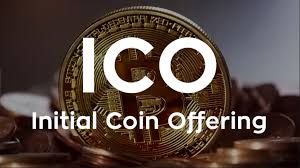By Emery Waddell and Travis Hanly
Some argue the escalating hype surrounding initial coin offerings (also known more broadly as token sales) – viewed by many as a new alternative method of raising capital to traditional VC, crowdfunding and IPOs – is surpassing sustainable reality. Others are more bullish on the practice, suggesting the fundamental concept has long term staying power, regardless of current market conditions. When considering options, blockchain entrepreneurs (ICOs are essentially limited to blockchain companies for now) would do well to block out the noise and carefully consider both the pros and cons of choosing an ICO with real monetary value as a source of funding (see below a short, non-comprehensive list of considerations we put together). On the other side of the equation, traditional venture capitalists interested in blockchain technology would do well to view ICOs as a potential disruptor, and seek to continually enhance their value proposition and improve operational efficiency to compete.
We do not consider ourselves deep blockchain or ICO experts, but this is an important trend in our industry, so we have been keeping an eye on it. We thought we’d share some of our research, reactions and reading material we found helpful.
The Rise of ICOs
Initial coin offerings have made significant waves within the tech startup universe in the last few months as the industry has seen several companies raise tens of millions in a matter of just hours or days (the Google trends analysis below clearly illustrates the explosion of interest). This emerging concept has stirred a lot of discussion about the potential implications on access to capital and what the future might hold for all stakeholders involved.

Figure 1: Google Trends Data for Search Term “Initial Coin Offering”, 1/1/2016-6/15/2017
For those unfamiliar with token sales, they are a method for blockchain-based startups to raise capital by issuing their own new cryptocurrencies, which are sold to investors in exchange for established cryptocurrencies such as Bitcoin or Ethereum. The company that conducts the ICO can then use the Bitcoin/Ethereum that was raised on blockchain services to build/host the company’s products, or convert it to fiat currency to fund standard business expenses. In exchange, investors are given a tradeable asset that can be exchanged later for the company’s services, or kept in an investment portfolio in hopes that adoption of the company’s technology will take off and increase the value of their custom cryptocurrency.
The “blockchain-based” distinction is important to note in this model. Companies’ cryptocurrencies are typically built on the same blockchain as their application, meaning the adoption of the cryptocurrency and adoption of the app go hand in hand. In short, non-blockchain companies are not candidates for a token sale.
See below for a few of the more high-profile token sales of late.

The ICO model means that some blockchain startups are supplementing traditional VC (equity) funding and others are skipping it altogether. Some of those leading the blockchain / ICO hype are hailing the practice as potentially disruptive to the VC landscape. Certainly, the amount and growth of this type of investment suggests something disruptive is happening (see below from CBInsights and Smith + Crown).

Figure 2: CBInsights Data
But before we all rush to raise / invest in ICOs, we should take a step back and consider both the merits and the drawbacks (as they do exist).
How do ICOs Compare to other Funding Methods?
It’s possible the ICO market may be approaching the point of overheating. But even if / when a correction comes, token sales and blockchain are likely here to stay. ICOs carrying real monetary value will continue to present another funding option to certain businesses but, as always, there will be distinct pros and cons for entrepreneurs to consider. These points may become more or less relevant depending on structure, pricing, timing, marketing and a number of other factors related to the distribution of tokens (of which there are many variations).
Pros
- No direct equity dilution (in the traditional sense): investors buy company currency, not shares of the company
- No new stockholders means less pressure to cater to outside incentives (again, depends on structure, voting rights)
- Speed: An effective token sale process can result in millions of dollars raised in a matter of minutes (excluding prior marketing, legal work)
- Like an IPO, the company can decide exactly how much to sell rather than negotiate stake with lead investor(s)
- Unlike an IPO, there are no disclosure requirements (for now), so the company can expose as much or as little as they’d like for investors doing their diligence
Cons
- Not partnering with institutional investors means not benefiting from the operational / strategic / network-based value-add that they can bring to the table
- Post-sale coins can fluctuate dramatically in value (particularly given the speculative nature of many cryptocurrency investors), potentially placing undue pressure on the company and limiting the ability to raise more capital with follow-on offerings
- Chances are good that the SEC, other regulatory bodies will crack down at some point, restricting to some degree the current free flow of capital. [Since this post was published, the SEC issued a report of investigation finding that DAO Tokens are securities under U.S. law. See Fred Wilson’s post on the topic.]
- Current market enables favorable pricing and relatively large raises, but this may not sustain
What’s Next?
The practice of ICOs is still in its infancy, and the landscape is still somewhat the “wild west” of investing. But in the coming years we will likely see the dust settle as regulations catch up and ICOs become more commonplace. For blockchain entrepreneurs considering this route, it’s important to weigh the risks in addition to the compelling perks. For venture capitalists, it would be wise to view this path as a legitimate alternative or at least a supplemental option for capital, and to respond by continuing to increase their operational efficiency and the value that they bring to entrepreneurs.
Additional Reading
- Intro to Blockchain, Ethereum, and ICOs
- Token Sales in the News

